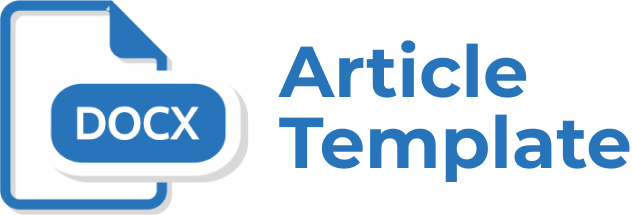The Effectiveness of Storybird Platform for Improving Students’ Writing Skill in Recount
Abstract
Writing in the 21st century enables writers to employ many types of digital technology and social
networking. The writers are everywhere as well as the readers. The new concept of writ ing is to
share, to encourage dialogue, and importantly to participate (Yancey 2009, p.4). There is a tool that
meets those concepts, namely storybird. Storybird, describing itself as ―collaborative storytelling‖, is a
social media service that allows users to create a story to connect with users regardless of ages and
places. ―Two people author a Storybird—one with words, one with pictures—and then share it with their
network. The final product can be printed, watched on screen, played with like a toy, or shared through a
worldwide library.‖ (Storybird, 2009). Based on those facts, a study to investigate the effectiveness of
using storybird platform for improving students’ writing skill is important. The samples were
collected from 10 students of tenth grade of senior high school by using non random sampling. The
research method was a quasi experimental study. The data was analyzed by using t-test. The result of the
study showed that the use of ―Story Bird Platform‖ was effective to improve writing skill.
Keywords: recount, storybird, writing
Full Text:
PDFReferences
Adas, Dana., & Bakir, Ayda. (2013). Writing Difficulties and New Solutions: Blended
Learning as an Approach to Improve Writing Abilities. International Journal of
Humanities and Social Science Vol. 3 No. 9; May 2013, pp. 255-266.
Albesher, Khaled B. (2012). Developing the Writing Skills Of ESL Students
Through the Collaborative Learning Strategy. Newcastle: Newcastle
University.
Alves, Anabela R. (2008). Process Writing. Birmingham: The University of
Birmingham
Andrzejczak, N., Trainin, G., & Poldberg, M. (2005). From image to text: Using
images in the writing process. International Journal of Education & the Arts
(12). Retrieved (February 14, 2008) from http://ijea.asu.edu/v6n12/ p. 1-17.
Ary, Donald., Jacobs, Lucy C., and Sorensen, Chris. (2010). Introduction to Research
in Education. Wadsworth: Cengange Learning.
Coulmas, Florian. (2005). Writing Systems: An Introduction to the ir Linguistic
Analysis. Cambridge: Cambridge University Press.
Creswell, John. W. (2003). Educational Research: Planning, Conducting, and
Evaluating Quantitative andQualitative research. Boston: Pearson.
Dieni, Novita Al Ihyak. (2014). The Effectiveness of Visual Novel to Teach Writing
Viewed from Students’ Creativity (An Experimental Study at the Seventh Grade
Students of SMP Al-Islam I Surakarta in the Academic Year of 2013/2014).
Solo: Universitas Sebelas Maret.
Ellis, R. (1985). Understanding second language acquisition. Oxford, England:
Oxford University Press.
Gall, Meredith D., Gall, Joyce P., and Borg, Walter R. (2003). Educational Research:
An Introduction. Boston: University of Oregon.
Gimenez, Pilar A., & Hernandez, Purificacion S. (2001). Defining in English: A Tool
to Measure Writing Abilities. Universidad de Murcia. Hedge,T. (2005) Writing.
Oxford: Oxford University Press.
Hyland, Ken. (2003). Second Language Writing. Cambridge: CAMBRIDGE
UNIVERSITY PRESS.
Jessica A. Wertz. (2014). Bitstrips and Storybird: Writing Development in a Blended
Literacy Camp. Voices from the Middle, Volume 21 Number 4, May 201.
Jewit, Carey. (2005). Multimodality, ―Reading‖, and ―Writing‖ for the 21st
Century. Discourse:studies in the cultural politics of education Vol.26, No.3,
September 2005, pp.315-331.
Lenhart, Amanda., Susan, Arafeh., Aaron, Smith., and Alexandra MacGill. ―Writing,
Technology, and Teens.‖ Pew Internet and American Life Project Report.
Retrieved on November 4th 2015 from
www.pewinternet.org/PPF/r/247/report_display.asp.
Lewis, G. (2004). The internet and young learners. New York: Oxford University
Press.
McLeod, Susan. (1987). Defining Writing across the Curriculum. WPA: Writing
Programm Administration, Volume 11, Numbers 1-2, Fall 1987
Noytim, U. (2006). The impact of the internet on English language teaching: a case
study at a thai rajabat university. Sidney: University of Technology Sidney.
Nunan, D. (1999). Second Language Teaching and Learning. Boston: Heinle &
Heinle Publishers.
Purcell, Kristen., Buchanan, Judy., & Friedrich, Linda. (2013). The Impact of Digital
Tools on Student Writing and How Writing is Taught in Schools. Pew Research
Center.
Ramirez, Yeison E.H. (2013). Writing Skill Enhancement When Creating Narrative
Texts Through the Use Of Collaborative Writing And the Storybird Web 2.0
Tool. Colomb. Appl. Linguist. J. ISSN 0123-4641 • June - December 2013. Vol.
• Number 2 • Bogotá, Colombia. p. 166 – 183.
Schulz, Melissa. A Focus on Writing: How to Teach and As sess English Language
Learners. The Ohio Journal of English Language Arts Volume 49, Number 2
Summer/Fall 2009, pp. 23-27.
Shafer, Gregory. (2001). Composition for the Twentieth-First Century. English Journal
of the National Council of Teachers of English. Shin, Joan Kang. (2009).
Teaching English to Young Learners. English Language Center : University of
Maryland, Baltimore County.
Smith, Barbara L., & MacGregor, Jean T. (2013). What is Collaborative
Learning?. Washington Center for Improving the Quality of Undergraduate
Education.
Storybird.com. How to Instructions. Retrieved on November 8th 2015
from https://integrating-techoptions.wikispaces.com.
Tribble, C. (1996). Writing. New York: Oxford University Press
Tuckman, Bruce. W. (1999). Conducting Educational Research.New York: Harcourt
Brace Jovanovich.
Yancey, Kathleen B. (2009). Writing in the 21st Century. A report from the National
Council of Teachers of English.
Yancy, Katherine Blake. Writing in the 21st Century. The Ohio Journal of English
Language Arts Volume 49, Number 2 Summer/Fall 2009, pp. 70-79.
Yang, J.-C., Ko, H. W., & Chung, I. L. (2005). Web-based Interactive Writing
Environment: Development and Evaluation. Educational Technology & Society,
(2), 214-229.
Yi, Jyi-yeon. (2009). Defining Writing Ability For Classroom Writing Assessment In
High Schools. Journal of Pan-Pacific Association of Applied Linguistics, 13(1),
-69. White, R and Arndt, V. (1991). Process Writing. Harlow: Longman
Zhao, Yong. (2005). Technology and Second Language Learning: Promises and
Problems. Michigan State University.
Refbacks
- There are currently no refbacks.


